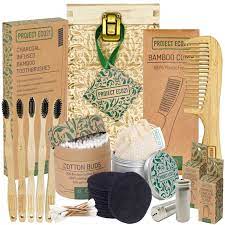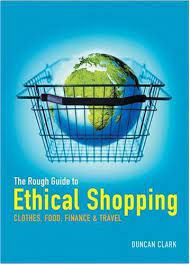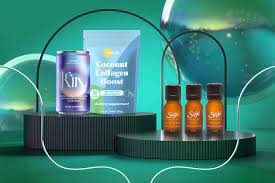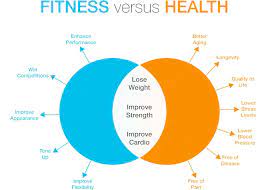Ethical Shopping: Making a Difference with Every Purchase
In today’s world, where consumerism is rampant and the impact of our choices is more evident than ever, ethical shopping has emerged as a powerful way to make a positive difference. It goes beyond just buying products; it’s about aligning our values with our purchasing decisions and supporting businesses that prioritize social and environmental responsibility.
So, what exactly is ethical shopping? At its core, it involves considering the ethical implications of the products we buy. This includes factors such as fair trade practices, sustainable sourcing, animal welfare, workers’ rights, and environmental impact. By consciously choosing to support companies that uphold these values, we can contribute to a more equitable and sustainable world.
One of the key principles of ethical shopping is fair trade. This concept ensures that producers in developing countries receive fair compensation for their goods and labor. By purchasing fair trade products like coffee, chocolate, or handicrafts, we can help improve the lives of marginalized communities and empower them economically.
Sustainable sourcing is another crucial aspect of ethical shopping. It involves selecting products that are made from renewable resources or have minimal impact on the environment. By opting for sustainably sourced items such as organic clothing or eco-friendly household products, we can reduce our carbon footprint and promote a greener planet.
Animal welfare is also an important consideration in ethical shopping. Choosing cruelty-free cosmetics or opting for products made from alternative materials rather than animal-derived ones helps protect animals from unnecessary harm and exploitation.
Furthermore, ethical shopping supports workers’ rights by favoring companies that provide fair wages and safe working conditions. By avoiding brands associated with sweatshops or exploitative labor practices, we send a message that workers’ well-being should never be compromised for profit.
Engaging in ethical shopping doesn’t mean sacrificing style or quality either. In fact, many ethical brands offer beautifully crafted products that rival their conventional counterparts in terms of design and durability. From sustainable fashion labels to eco-friendly home goods, there is a wide array of choices available to suit every taste and need.
Moreover, ethical shopping is not limited to physical stores. Online platforms dedicated to promoting ethical products have emerged, making it easier than ever to discover and purchase responsibly sourced items with just a few clicks.
By embracing ethical shopping practices, we become conscious consumers who use our purchasing power to shape a better world. Every time we choose an ethically made product, we are supporting businesses that prioritize people and the planet over profit. It’s a small but significant step towards creating a more sustainable and equitable future.
So, next time you go shopping, take a moment to consider the impact of your choices. Look for certifications like Fairtrade or organic labels. Research brands that prioritize sustainability and transparency. By making informed decisions and supporting ethical businesses, you can become part of a global movement that strives for positive change—one purchase at a time.
Benefits of Ethical Shopping: Promoting Sustainable Practices, Protecting the Environment, Supporting Local Businesses, Ensuring Fair Wages, Combating Exploitation and Child Labour, Empowering Informed Consumer Choices
- It encourages sustainable production and consumption practices.
- It helps to protect the environment by reducing pollution and waste.
- It supports local businesses, promoting economic growth in the community.
- It promotes fair wages for workers and good working conditions in factories.
- It reduces the risk of exploitation and child labour in developing countries around the world.
- It allows customers to make informed decisions about their purchases, ensuring that their money is going towards ethical causes they care about most
Challenges of Ethical Shopping: Limited Availability, Higher Costs, Lack of Transparency, and Verification Issues
- Limited availability of ethical products – Many ethical products are not widely available, and can be hard to source in local stores.
- Costly – Ethical products often come with a higher price tag than their non-ethical counterparts.
- Lack of transparency – It can be difficult to determine the full extent of a product’s ethical credentials, as companies may not always provide clear information about their production methods and sources of materials.
- Difficult to verify claims – Companies may make marketing claims that are difficult for consumers to verify, making it hard to know if an item is truly ethically produced or not.
It encourages sustainable production and consumption practices.
Encouraging Sustainable Production and Consumption: The Pro of Ethical Shopping
In a world grappling with environmental challenges, ethical shopping emerges as a powerful tool to promote sustainable production and consumption practices. By consciously choosing products that align with our values and support businesses committed to sustainability, we can make a significant impact on the planet.
One of the key advantages of ethical shopping is its ability to drive sustainable production. Ethical brands prioritize environmentally friendly practices throughout their supply chains, from sourcing raw materials to manufacturing processes. They strive to minimize waste, reduce energy consumption, and employ eco-friendly alternatives whenever possible.
By supporting these brands, we send a clear message that sustainability matters. Our purchasing choices directly influence market demand, encouraging more companies to adopt sustainable practices. As ethical shopping gains traction, it creates a ripple effect that pushes entire industries towards greener alternatives.
Furthermore, ethical shopping promotes sustainable consumption. It encourages us to buy products that are durable and built to last, rather than succumbing to the throwaway culture of fast fashion or disposable goods. By investing in high-quality items that stand the test of time, we reduce waste and minimize our carbon footprint.
Ethical brands often offer repair services or take-back programs for their products at the end of their lifecycle. This circular approach ensures that materials are recycled or repurposed instead of ending up in landfills. By actively participating in these initiatives, we contribute to a more sustainable economy where resources are conserved and waste is minimized.
Beyond environmental benefits, ethical shopping also supports social sustainability. Many ethical brands prioritize fair wages and safe working conditions for their employees. By choosing these products over those associated with exploitative labor practices or sweatshops, we contribute to a fairer and more equitable society.
Moreover, ethical shopping encourages transparency in supply chains. Brands committed to sustainability often provide detailed information about their sourcing methods and production processes. This transparency allows consumers to make informed choices based on their values—whether it’s supporting organic farming, fair trade practices, or cruelty-free alternatives.
In a world where our consumption patterns have far-reaching consequences, ethical shopping empowers us to make a positive difference. By choosing products that prioritize sustainability and supporting companies that embrace responsible practices, we become catalysts for change.
So, the next time you go shopping, consider the power of your choices. Look for ethical brands that promote sustainable production and consumption. By supporting them, you become an agent of change, contributing to a more sustainable and equitable future for all.
It helps to protect the environment by reducing pollution and waste.
Ethical Shopping: Protecting the Environment One Purchase at a Time
In a world grappling with environmental challenges, ethical shopping stands out as a powerful tool for protecting the planet. By consciously choosing to support businesses that prioritize sustainability, we can significantly reduce pollution and waste, making a positive impact on our environment.
One of the key advantages of ethical shopping is its ability to address the issue of pollution. Many conventional manufacturing processes contribute to air and water pollution through harmful emissions and chemical waste. However, ethical brands often prioritize eco-friendly production methods that minimize pollution. They utilize renewable energy sources, implement efficient waste management systems, and employ cleaner technologies to reduce their environmental footprint.
By opting for ethically made products, we can help combat air pollution caused by toxic emissions. For example, choosing clothing made from organic or sustainably sourced materials reduces the demand for garments produced using harmful chemicals. This not only protects our environment but also promotes healthier living conditions for workers involved in the production process.
Ethical shopping also plays a significant role in reducing waste generation. Fast fashion and disposable consumer goods have contributed to an alarming increase in waste levels worldwide. However, ethical brands focus on creating products that are durable, repairable, or recyclable. By investing in these items rather than constantly buying cheaply made alternatives, we can significantly reduce the amount of waste ending up in landfills.
Additionally, many ethical brands actively promote recycling initiatives and offer take-back programs for their products. This encourages consumers to return used items for proper disposal or repurposing instead of simply discarding them. By participating in these programs, we contribute to a circular economy where resources are reused and waste is minimized.
Furthermore, ethical shopping encourages us to adopt mindful consumption habits. Instead of succumbing to impulse purchases or buying unnecessary items that quickly end up unused or discarded, we become more conscious of our choices. We consider whether we truly need a product before buying it and focus on investing in high-quality, long-lasting items that have a reduced impact on the environment.
In essence, ethical shopping empowers us to be responsible stewards of the environment. By supporting brands that prioritize sustainability, we actively contribute to reducing pollution and waste. Each ethical purchase becomes a vote for a cleaner and greener future.
So, the next time you’re tempted to make a purchase, take a moment to consider the environmental implications. Look for eco-friendly certifications, sustainable materials, or brands with transparent sustainability practices. By making informed choices and embracing ethical shopping, we can protect our planet and create a more sustainable future for generations to come.
Supporting Local Businesses: Ethical Shopping’s Boost to Community Economic Growth
In the era of globalized markets and multinational corporations, supporting local businesses has become increasingly important. Ethical shopping, with its focus on conscious consumerism, plays a vital role in promoting economic growth within communities.
When we choose to buy from local businesses, we contribute directly to the prosperity of our communities. Unlike large corporations, local businesses tend to invest a significant portion of their revenue back into the local economy. This means that the money we spend stays within our community, circulating and creating a multiplier effect that benefits everyone.
Ethical shopping encourages us to seek out and support these local businesses. By choosing products from nearby farms, artisans, or independent retailers, we help create jobs and opportunities for our neighbors. These businesses often provide employment for individuals within the community and contribute to its overall economic stability.
Moreover, supporting local businesses through ethical shopping fosters a sense of community pride and identity. These establishments often reflect the unique character and culture of the area they operate in. Whether it’s a family-owned bakery or a boutique showcasing locally made crafts, these businesses add vibrancy and charm to our neighborhoods.
Another advantage of supporting local businesses is their commitment to sustainable practices. Many small-scale enterprises prioritize environmentally friendly methods of production and sourcing. By purchasing from them, we indirectly contribute to reducing carbon footprints and promoting sustainability within our community.
Furthermore, local businesses are more likely to collaborate with other local suppliers and service providers. This network of partnerships strengthens the entire community’s economic fabric by creating interdependencies between various enterprises. It fosters collaboration rather than cutthroat competition, resulting in shared success and growth for all involved.
Ethical shopping not only supports local businesses but also helps preserve cultural heritage. Many small-scale producers specialize in traditional crafts or regional goods that reflect the unique traditions and skills passed down through generations. By purchasing these products, we help sustain these cultural practices and ensure their continuation for future generations.
In summary, ethical shopping’s support of local businesses is a powerful catalyst for community economic growth. By consciously choosing to buy from nearby enterprises, we contribute to job creation, economic stability, and the preservation of our community’s unique identity. Let’s remember that every purchase we make has the potential to shape our local economy positively. So, the next time you shop, consider how you can support your community by embracing ethical shopping practices and making a difference right in your own backyard.
Promoting Fair Wages and Good Working Conditions: The Power of Ethical Shopping
In an era where fast fashion and mass production dominate the market, ethical shopping stands as a beacon of hope for workers worldwide. By consciously choosing to support brands that prioritize fair wages and good working conditions in factories, we can make a significant impact on the lives of those who make our clothes.
One of the key advantages of ethical shopping is its emphasis on fair wages. Many conventional fashion brands rely on exploitative labor practices, often paying workers meager salaries that barely cover their basic needs. This perpetuates a cycle of poverty and inequality. However, ethical brands strive to ensure that workers receive fair compensation for their hard work, allowing them to support themselves and their families with dignity.
Moreover, ethical shopping promotes good working conditions in factories. Unethical manufacturing practices often involve long hours, unsafe environments, and inadequate facilities. These conditions not only compromise the well-being of workers but also endanger their physical and mental health. By supporting brands committed to providing safe working environments, we contribute to the well-being and dignity of those who produce our goods.
Ethical shopping encourages transparency within supply chains. Brands that prioritize fair wages and good working conditions are more likely to have transparent sourcing processes. They establish relationships with suppliers based on trust, ensuring that every step of the production process adheres to ethical standards. This transparency allows consumers to make informed choices about the products they purchase.
By actively engaging in ethical shopping practices, we send a powerful message to companies that worker exploitation is unacceptable. We demand accountability from brands by choosing to support those that prioritize fair treatment for their employees.
Furthermore, promoting fair wages and good working conditions doesn’t only benefit factory workers; it also contributes to broader social change. When workers are paid fairly and provided with safe working environments, they have more opportunities for personal growth and economic stability. This can lead to improved education levels, better healthcare access, and stronger communities.
In conclusion, ethical shopping’s promotion of fair wages and good working conditions is a pro that cannot be ignored. By supporting brands that prioritize these values, we become advocates for workers’ rights and contribute to a more equitable society. Together, through our purchasing choices, we can create a world where every worker is treated with dignity and respect.
It reduces the risk of exploitation and child labour in developing countries around the world.
Ethical Shopping: Reducing Exploitation and Child Labour
One of the significant advantages of ethical shopping is its potential to reduce the risk of exploitation and child labour in developing countries worldwide. By consciously supporting brands that prioritize fair trade practices and workers’ rights, we can contribute to a more just and equitable global economy.
In many developing countries, vulnerable communities often face harsh working conditions, meagre wages, and even child labour in industries such as textiles, agriculture, and manufacturing. However, ethical shopping offers an alternative by promoting transparency and accountability throughout the supply chain.
When we choose to buy products from companies that adhere to ethical standards, we are actively supporting fair trade practices. These practices ensure that workers are paid fair wages, work in safe environments, and have access to basic rights such as healthcare and education. By demanding fair trade products like coffee or clothing made under fair conditions, we help create opportunities for economic empowerment while reducing the risk of exploitation.
Furthermore, ethical shopping discourages the use of child labour. Many companies committed to ethical practices have strict policies against employing underage workers. By supporting these brands, we send a clear message that child exploitation is unacceptable. Instead, we encourage businesses to invest in education and provide opportunities for children to develop their skills in a safe environment.
By making conscious choices when shopping, we become part of a movement that advocates for human rights and dignity. Ethical shopping empowers consumers to support brands that prioritize the well-being of workers and actively work towards eradicating exploitative practices.
It’s important to note that ethical shopping not only benefits individuals in developing countries but also promotes sustainable economic development at a broader level. When workers are paid fair wages and have access to better working conditions, they can contribute more effectively to their local economies. This creates a positive ripple effect by fostering growth and reducing poverty within communities.
In conclusion, ethical shopping offers us an opportunity to make a tangible impact on the lives of individuals in developing countries. By choosing to support brands that prioritize fair trade practices and workers’ rights, we can help create a world where exploitation and child labour become things of the past. Together, let’s use our purchasing power to build a more equitable and compassionate global community.
Ethical Shopping: Empowering Consumers to Make Informed Choices
In a world inundated with countless products and brands, ethical shopping stands out as a powerful tool that enables consumers to make informed decisions about their purchases. It empowers individuals to ensure that their hard-earned money is directed towards causes they truly care about, supporting businesses that uphold ethical values and make a positive impact on society and the environment.
One of the key advantages of ethical shopping is the ability to align our spending with our personal values. By researching and understanding the practices of different brands, we can choose to support those that prioritize ethical causes close to our hearts. Whether it’s fair trade, sustainability, animal welfare, or workers’ rights, ethical shopping allows us to channel our purchasing power towards these important issues.
Informed decision-making is at the heart of ethical shopping. Rather than just mindlessly grabbing products off shelves or clicking “add to cart” online, consumers have the opportunity to delve deeper into a brand’s practices and policies. They can look for certifications or labels that indicate adherence to certain standards, such as Fairtrade or organic certifications. By doing so, customers can be confident that their money is going towards businesses that are actively working towards positive change.
Moreover, ethical shopping encourages transparency and accountability within the marketplace. As consumers demand more information about how products are made and sourced, companies are compelled to be more open about their practices. This increased transparency enables consumers to make well-informed choices based on factual information rather than marketing gimmicks.
By engaging in ethical shopping, customers become active participants in shaping a better world. They have the power to support companies that prioritize social responsibility and environmental sustainability over mere profit margins. This conscious decision-making process fosters a sense of connection between consumers and the causes they care about most deeply.
Ethical shopping also serves as a catalyst for change within industries. As more consumers demand ethically produced goods, businesses are compelled to adapt and improve their practices. This creates a ripple effect, encouraging other companies to follow suit and raising the overall standards within the marketplace.
In conclusion, ethical shopping empowers consumers to make informed decisions that align with their values. It allows individuals to ensure that their money supports causes they genuinely care about, whether it’s fair trade, sustainability, or any other ethical consideration. By engaging in ethical shopping practices, consumers become agents of change, driving businesses towards more responsible practices and creating a better world for all.
Limited availability of ethical products – Many ethical products are not widely available, and can be hard to source in local stores.
The Conundrum of Limited Availability: The Challenge of Ethical Shopping
Ethical shopping has gained considerable popularity in recent years, as consumers increasingly prioritize social and environmental responsibility. However, one significant challenge that ethical shoppers often face is the limited availability of ethical products in local stores.
While the demand for ethically made goods continues to grow, not all retailers have caught up with this trend. Many ethical products, from fair trade coffee to sustainable clothing, are not widely stocked in mainstream stores. This can make it difficult for conscientious consumers to find the products they desire in their local communities.
The limited availability of ethical products can be frustrating for those who want to make a positive impact through their purchasing choices. It may require extra effort and research to locate specific items or brands that align with their values. This inconvenience can deter some people from engaging in ethical shopping altogether.
Furthermore, the lack of availability may also contribute to higher prices for ethical products. With limited competition and economies of scale, ethical brands may struggle to lower their prices compared to mass-produced alternatives found in mainstream stores. This price disparity can make it challenging for some individuals on a tight budget to afford ethically made goods.
However, it’s important not to lose hope. Despite the challenges posed by limited availability, there are ways to overcome them and continue supporting ethical practices.
Firstly, online shopping has become a game-changer for accessing a wider range of ethical products. E-commerce platforms dedicated to promoting sustainable and fair trade items offer a convenient solution by connecting consumers with ethically minded brands from around the world. This opens up a world of options that might not be available locally.
Secondly, seeking out local independent stores and specialty shops can often yield surprising results. These smaller businesses are more likely to stock niche or lesser-known ethical brands that might not be found in larger retail chains. Exploring farmers’ markets or artisanal fairs is another way to discover unique and locally produced ethical products.
Lastly, raising awareness and demanding change can have a significant impact. By expressing our preferences for ethical products to local retailers, we can encourage them to expand their offerings. Engaging in conversations about sustainability and ethical practices with friends, family, and communities can also create a ripple effect and generate more demand for these products.
While the limited availability of ethical products remains a con of ethical shopping, it is not an insurmountable obstacle. By embracing online platforms, exploring local alternatives, and advocating for change, we can continue to support ethical practices despite the challenges. Together, we can drive the demand for ethically made goods and contribute to a more sustainable and responsible future.
Costly – Ethical products often come with a higher price tag than their non-ethical counterparts.
The Cost Conundrum: The Price of Ethical Shopping
One of the common challenges often associated with ethical shopping is the higher price tag that comes with it. It’s no secret that ethical products can sometimes be more costly compared to their non-ethical counterparts. While this may seem like a deterrent for some, it’s essential to understand the reasons behind this price difference and consider the long-term benefits that ethical shopping brings.
One of the primary factors contributing to the higher cost of ethical products is the commitment to fair trade and sustainable practices. Ethical brands often prioritize paying fair wages to workers, ensuring safe working conditions, and sourcing materials in an environmentally responsible manner. These practices require additional resources, time, and effort, which inevitably reflect in the final price of the product.
Furthermore, ethical brands often choose high-quality materials that are responsibly sourced or eco-friendly. These materials may be more expensive than conventional alternatives due to their limited availability or production methods that prioritize sustainability. Investing in such materials ensures that the products are durable and have a lower environmental impact in the long run.
While upfront costs may be higher for ethical products, it’s crucial to consider their overall value and impact. By supporting ethical brands, we contribute to a more equitable society where workers are treated fairly and provided with better working conditions. We also help protect our environment by choosing products made from sustainable materials and reducing waste.
Additionally, when we opt for ethically made products, we support smaller businesses and artisans who often have higher production costs due to their commitment to fair trade practices. By purchasing from these brands, we contribute directly to empowering communities and fostering economic growth.
It’s also worth noting that as demand for ethical products continues to rise, economies of scale may come into play. As more consumers choose ethical options, production volumes increase, leading to potential cost reductions over time. This could eventually make ethical products more accessible and affordable for a broader audience.
While it’s understandable that the higher price of ethical products can be a concern for some, it’s essential to view it as an investment in a better future. By prioritizing ethical shopping, we send a message to businesses and industries that we value sustainability, fair trade, and social responsibility. Over time, this can encourage more companies to adopt ethical practices, leading to a shift towards a more sustainable and equitable marketplace.
Ultimately, the choice to engage in ethical shopping is a personal one that depends on individual circumstances and priorities. However, it’s worth considering the long-term benefits of supporting ethical brands and the positive impact it can have on both people and the planet. With each purchase we make, we have the power to contribute towards building a more sustainable and just world for all.
Lack of Transparency: The Hidden Challenge in Ethical Shopping
Ethical shopping has gained widespread recognition as a powerful way to make a positive impact on the world. However, it’s important to acknowledge that it is not without its challenges. One significant hurdle that ethical shoppers often face is the lack of transparency from companies regarding their production methods and sources of materials.
In an ideal world, every company would provide clear and comprehensive information about their ethical practices. Consumers would have access to detailed reports on fair trade certifications, sustainable sourcing, and workers’ rights. Unfortunately, this level of transparency is not always the reality.
Many companies fall short when it comes to disclosing the full extent of their product’s ethical credentials. This lack of transparency can make it difficult for consumers to make informed choices about the products they purchase. Without clear information, it becomes challenging to determine whether a company truly upholds ethical standards or if they are merely capitalizing on the growing demand for socially responsible products.
One aspect where this lack of transparency becomes particularly problematic is in supply chains. Products often go through complex networks involving multiple suppliers and subcontractors before reaching the end consumer. It can be challenging for companies to trace every step of this intricate web and provide accurate information about each link in the chain.
Moreover, some companies may engage in greenwashing – a practice where they present themselves as more environmentally friendly or socially responsible than they actually are. This deceptive marketing tactic can mislead consumers who genuinely want to support ethical brands but are unable to verify the authenticity of these claims due to limited transparency.
To overcome this challenge, consumers must become more proactive in demanding transparency from companies. By asking questions about sourcing practices, labor conditions, and environmental impact, we can push businesses towards greater accountability.
Additionally, supporting third-party certifications and labels can help navigate through the lack of transparency. Recognized certifications such as Fairtrade or organic labels provide assurance that certain standards have been met. However, it’s important to note that even these certifications may have limitations, and it’s essential to research their criteria and credibility.
In conclusion, while ethical shopping offers a pathway towards a more sustainable and responsible future, the lack of transparency remains a significant challenge. As consumers, it is our responsibility to demand clearer information from companies and support initiatives that promote transparency in supply chains. By doing so, we can continue to push for greater accountability and ensure that our purchasing decisions align with our values.
Difficult to verify claims – Companies may make marketing claims that are difficult for consumers to verify, making it hard to know if an item is truly ethically produced or not.
Difficult to Verify Claims: Navigating the Complexity of Ethical Shopping
In today’s market, ethical shopping has gained significant attention as consumers increasingly seek to align their values with their purchasing decisions. However, one of the challenges that arise with this movement is the difficulty in verifying the claims made by companies regarding the ethical production of their products.
With the rise in consumer demand for ethically produced goods, many companies have recognized the marketing potential in promoting their products as “ethical” or “sustainable.” While this is undoubtedly a positive step towards raising awareness, it also opens up a potential conundrum for consumers who genuinely want to make informed choices.
The problem lies in the lack of standardized regulations and certifications across industries. Without clear guidelines or independent verification processes, it can be challenging for consumers to discern whether a company’s claims about its ethical practices hold true. This ambiguity creates a grey area where companies can make unsubstantiated claims without facing consequences.
For instance, a company might label its product as “fair trade” or “eco-friendly,” but without proper certification or transparency, it becomes difficult for consumers to validate these assertions. As a result, well-intentioned shoppers may inadvertently support businesses that engage in greenwashing or misleading marketing tactics.
To navigate this complexity, consumers interested in ethical shopping must take an active role in researching and educating themselves about different certifications and standards within specific industries. Organizations such as Fairtrade International or Rainforest Alliance provide reliable certifications that guarantee fair trade practices and sustainable sourcing. By familiarizing themselves with these certifications and supporting brands that carry them, shoppers can have more confidence in their purchasing decisions.
Additionally, engaging with independent third-party organizations and online platforms dedicated to promoting ethical shopping can provide valuable insights into a company’s practices. These platforms often conduct thorough research and vetting processes to verify claims made by brands before endorsing them.
While it may require some extra effort on the part of consumers, the movement towards ethical shopping is gradually pushing for greater transparency and accountability within the industry. As more people demand evidence-based claims and seek out reputable certifications, companies will be incentivized to provide clearer information about their ethical practices.
In conclusion, while the difficulty in verifying claims made by companies can be seen as a con of ethical shopping, it should not discourage consumers from making conscious choices. By staying informed, seeking out reliable certifications, and supporting trustworthy platforms, consumers can play an active role in fostering a more transparent and accountable marketplace. Together, we can encourage businesses to adopt genuine ethical practices that benefit both people and the planet.









